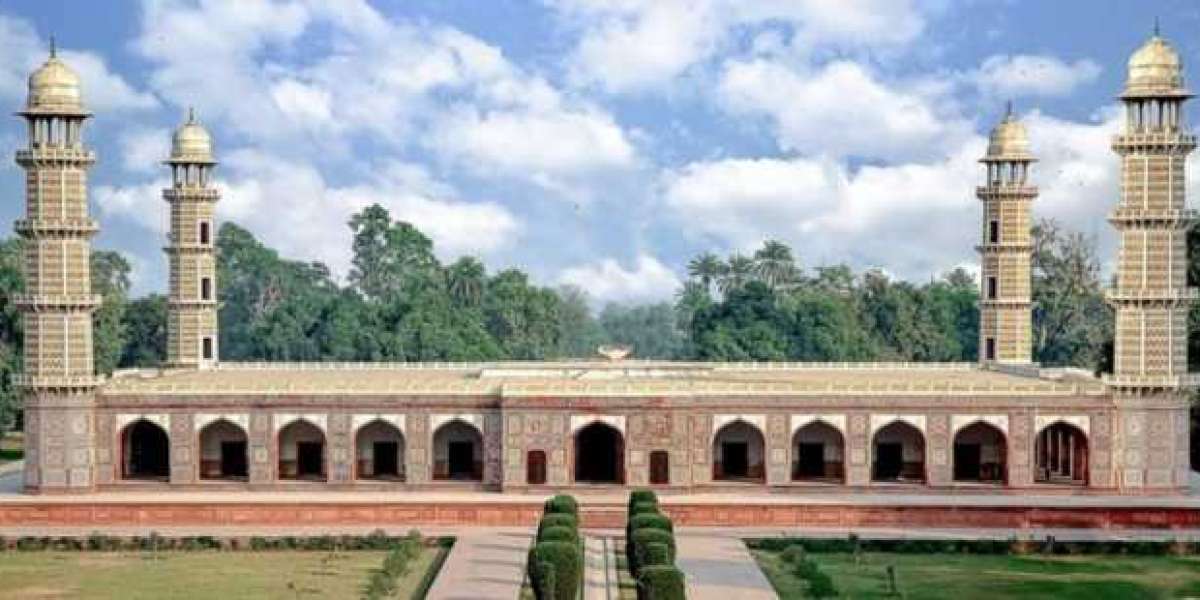Pakistan, a country blessed with stunning landscapes, diverse cultures, and a rich historical heritage, has been the cradle of some of the world's earliest civilizations. From ancient cities and forts to religious shrines and architectural marvels, Pakistan's historical treasures reflect centuries of rich history, conquests, and cultural exchanges. In this article, we'll take a journey through the top 10 must-visit historical places in Pakistan that provide a glimpse into its vibrant past.
- Mohenjo-Daro - Sindh
Mohenjo-Daro, meaning "Mound of the Dead," is one of the most important archaeological sites in the world and a UNESCO World Heritage Site. This ancient city of the Indus Valley Civilization dates back to around 2500 BCE and is located in the Sindh province of Pakistan. It was one of the largest settlements of its time, featuring advanced urban planning, including drainage systems and multistory houses. The Great Bath and the city's layout continue to intrigue historians and archaeologists. A visit to Mohenjo-Daro allows visitors to step back into history and explore one of the oldest civilizations known to humanity.
- Taxila - Punjab
Taxila, another UNESCO World Heritage Site, is one of the most significant archaeological locations in South Asia. Situated near the modern city of Islamabad, Taxila was an ancient city that thrived under various empires, including the Achaemenid, Greek, and Kushan empires. It was a hub for learning, especially Buddhist studies, and features ruins of monasteries, stupas, and other structures from different historical periods. Taxila is a must-visit for anyone interested in ancient history, particularly for those fascinated by the spread of Buddhism and Hellenistic influences in the region.
- Lahore Fort and Shalimar Gardens - Punjab
The Lahore Fort and Shalimar Gardens are masterpieces of Mughal architecture and are inscribed as UNESCO World Heritage Sites. The Lahore Fort, known for its impressive gateways and royal chambers, is a symbol of Lahore's rich history as the cultural heart of Pakistan. The Shalimar Gardens, built during the reign of Emperor Shah Jahan, are an exquisite example of Mughal landscape design. Together, these sites offer visitors a chance to experience the grandeur of Mughal artistry and the opulence of Lahore's royal past.
- Rohtas Fort - Punjab
Rohtas Fort, built by the Afghan king Sher Shah Suri in the 16th century, is a massive fort located near the city of Jhelum in Punjab. Known for its robust defense system, the fort was designed to thwart the Mughal emperor Humayun. The walls stretch over four kilometers, with several gateways and towers. Rohtas Fort is a UNESCO World Heritage Site and is considered one of the finest examples of early Muslim military architecture in South Asia. The fort's strategic location and imposing structure make it a fascinating site for history enthusiasts.
- Badshahi Mosque - Lahore
The Badshahi Mosque in Lahore, one of the largest mosques in the world, was constructed by Mughal Emperor Aurangzeb in 1673. This iconic mosque, known for its magnificent architecture, grand domes, and towering minarets, is a symbol of Lahore’s spiritual and cultural heritage. The mosque’s courtyard can accommodate over 55,000 worshipers, making it one of the largest in the world. The Badshahi Mosque is not just a place of worship but also an architectural masterpiece that stands as a testament to the Mughal Empire's legacy in Pakistan.
- Derawar Fort - Bahawalpur
Located in the Cholistan Desert near Bahawalpur, Derawar Fort is a striking fortress with its massive square bastions and 30-meter-high walls. The fort was originally built by a Hindu ruler in the 9th century and later taken over by the Nawabs of Bahawalpur. Derawar Fort's towering structure is visible for miles across the desert landscape. Although parts of the fort are not accessible to the public, its imposing presence and historical significance make it a fascinating destination for history buffs and travelers alike.
- Makli Necropolis - Thatta
Makli Necropolis, located near the ancient city of Thatta in Sindh, is one of the largest funerary sites in the world, stretching over 10 square kilometers. This UNESCO World Heritage Site contains the tombs of kings, queens, saints, and scholars, dating back to the 14th to 18th centuries. The tombs showcase a blend of Islamic, Persian, and indigenous Sindhi architectural styles, with intricate carvings and decorative elements. Visiting Makli Necropolis is like walking through a historical timeline, offering insights into the cultural and religious history of the region.
- Ranikot Fort - Sindh
Ranikot Fort, also known as "The Great Wall of Sindh," is the world's largest fort, with a circumference of around 32 kilometers. Located near Jamshoro, Sindh, Ranikot Fort is an enigmatic structure shrouded in mystery regarding its origins and purpose. Despite its massive size, much of the fort remains unexplored and poorly documented. However, it is a popular destination for history enthusiasts and trekkers who wish to explore its vast, desolate beauty. The fort's rugged walls and strategic location make it a unique historical landmark in Pakistan.
- Katas Raj Temples - Punjab
The Katas Raj Temples, located in the Salt Range of Punjab, are a complex of ancient Hindu temples dedicated to Lord Shiva. These temples date back to the 6th century and hold significant religious and historical importance. The complex also features a sacred pond believed to have mystical powers. The Katas Raj Temples are a reminder of the region's Hindu heritage and the centuries-old traditions that once flourished in this area. They are a pilgrimage site for Hindus and an important historical attraction for visitors interested in ancient architecture and religious history.
- Minar-e-Pakistan - Lahore
Minar-e-Pakistan is one of the most iconic monuments in Pakistan, located in Iqbal Park, Lahore. The tower marks the site where the Lahore Resolution was passed in 1940, leading to the creation of Pakistan in 1947. Standing at 70 meters tall, the structure is a blend of Islamic, Mughal, and modern architectural elements. It symbolizes Pakistan’s struggle for independence and holds great significance for the people of the country. A visit to Minar-e-Pakistan is a must for those wanting to understand the nation's journey toward freedom.
Conclusion
Pakistan's rich history is woven into the fabric of its land, from ancient cities to majestic forts and religious shrines. Exploring these historical places offers travelers a unique opportunity to connect with the past and appreciate the diverse cultural and architectural heritage that defines Pakistan. Whether you're interested in the grandeur of the Mughal era, the mysteries of ancient civilizations, or the spiritual significance of religious sites, Pakistan's historical landmarks are sure to leave a lasting impression.








